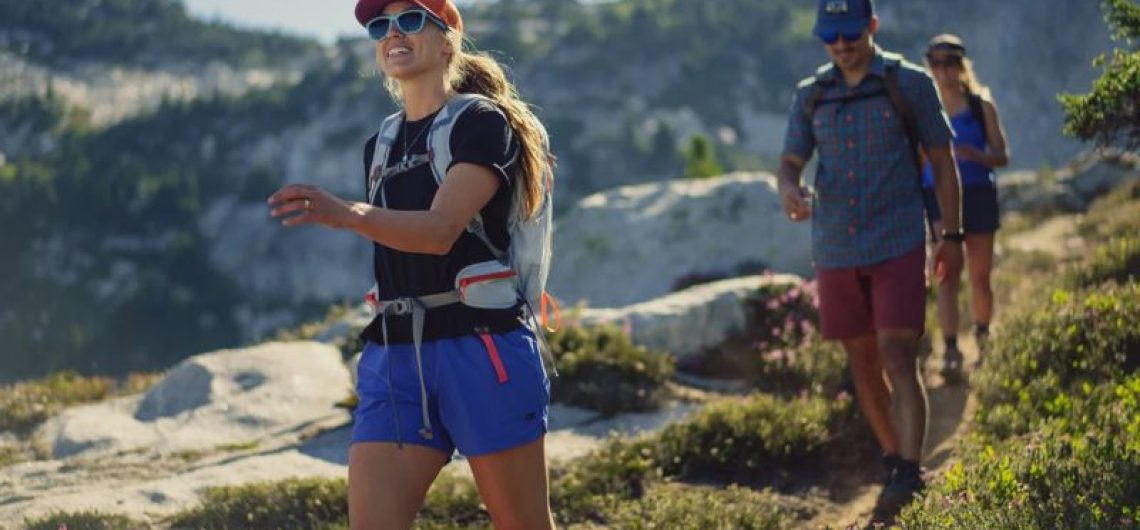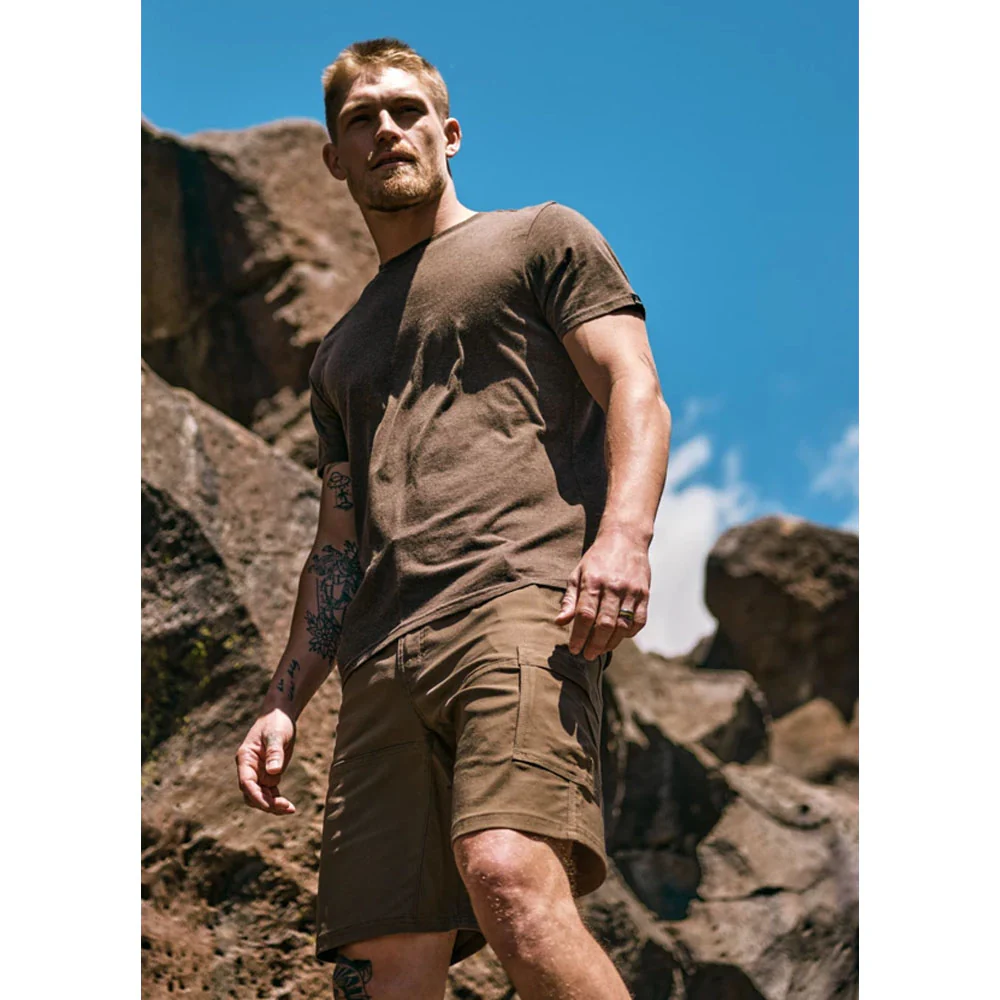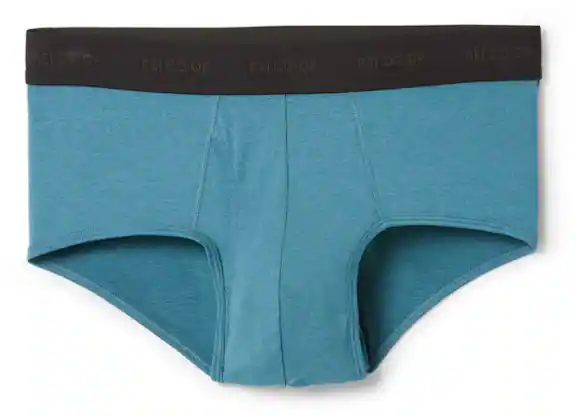Short and to the point, that is how important this gear is on Kilimanjaro. Most people talk about warm clothes, pants, hats and the like but they do not touch on one of the important subjects, innerwear! On day trips or multi-day hikes, it is acceptable and normal to wear shirts and t-shirts on the first day and the second day sometimes, and then the cold starts kicking in.
When preparing for a trek up Mount Kilimanjaro, choosing the right innerwear is crucial for your comfort, warmth, and overall success on the climb. The challenge of Kilimanjaro lies not only in its altitude but also in the wide range of temperatures and conditions you’ll experience, from hot, humid lower slopes to freezing, windy summit conditions. Your base layers, underwear, sports bras, and shorts must be carefully selected to manage moisture, provide support, and regulate body temperature. These items are the foundation of your trekking wardrobe, ensuring that you stay dry, warm, and comfortable throughout the ascent.
Finding the right pair of hiking shorts can make or break your outdoor adventure. The best hiking shorts not only protect you from the elements but also keep you comfortable while storing your essential gear like a map, keys, or a GPS device. On the other hand, the wrong pair can lead to discomfort, chafing, or even a miserable hike.
The Ultimate Kilimanjaro Climbing Gear Recommendations Checklist
Recommended Shorts and Underwear for climbing Kilimanjaro
When climbing Mount Kilimanjaro, choosing the right innerwear is critical to ensure comfort, warmth, and hygiene over multiple days of trekking. Here’s a guide to essential innerwear for both men and women:
Shorts
Wearing shorts on Kilimanjaro is optional, as full-length pants are generally recommended for most of the hike. Pants provide better protection from the sun, insects, and potential scrapes on rocky terrain. However, if you prefer hiking in shorts, opt for ones that are lightweight, knee-length, and feature deep, zippered pockets for added convenience and security.
PrAna Stretch Zion Shorts
The PrAna Stretch Zion Shorts are an excellent choice for Kilimanjaro due to their durability and comfort. Made from a quick-drying fabric, they are rated UPF 50+ for sun protection, ensuring you’re shielded from the sun’s harsh rays. These versatile shorts are perfect for the warmer sections of the climb.
- Price: Approximately $75
- Available at: [Retailers like REI and Backcountry]
Underwear
Comfortable and functional underwear is essential for the Kilimanjaro trek. The best underwear will be moisture-wicking, quick-drying, and made from breathable materials like synthetic fabrics (polyester) or merino wool. Cotton should be avoided as it retains moisture. Whether you prefer briefs, boxers, or boxer briefs, the key is to find a fit that’s snug without being too tight to avoid chafing, especially around the hips where your backpack straps rest. Bring at least four pairs for the duration of the trek.
REI Everyday Briefs
REI’s Everyday Briefs are made from a polyester/spandex blend that offers excellent breathability and moisture-wicking capabilities. The flat seam construction prevents uncomfortable rubbing, making them a reliable choice for long days on the trail.
- Price: About $20
- Available at: [REI and other outdoor retailers]
ExOfficio Give-N-Go Sport Mesh Boxer Brief
The ExOfficio Give-N-Go Sport Mesh Boxer Brief is designed with hiking in mind. Made from 90% nylon and 10% lycra, these breathable, quick-drying boxer briefs feature ultralight mesh fabric to keep you cool and dry. The antimicrobial treatment also helps reduce odours, making them ideal for multi-day treks.
- Price: Around $32
- Available at: [Backcountry, REI, Moosejaw]
Long Underwear for Extra Warmth
Last but not least, you need a pair of long underwear, sometimes referred to as yoga pants, leggings, tights, or baselayer bottoms. These elasticated, form-fitting pants provide an additional layer of warmth. On hot or warm days, you can wear these by themselves, under shorts, or under hiking pants. These are definitely something you’ll need for the summit ascent.
1. Base Layer (Thermal/Inner Wear)
The base layer is the first layer that sits next to your skin. Its purpose is to wick moisture (sweat) away from the skin, keeping you dry and warm. For Kilimanjaro, you’ll need both lightweight and midweight options as the temperatures can range from hot at the base to freezing near the summit.
Key Characteristics:
- Moisture-wicking: To keep sweat away and reduce the risk of hypothermia.
- Breathable: Prevents overheating.
- Quick-drying: Dries fast to prevent discomfort.
- Merino wool or synthetic materials: Avoid cotton as it retains moisture.
Recommendations:
- Top and Bottom Base Layers: Merino wool or synthetic materials like polyester.
2. Underwear (Men & Women)
Comfortable, moisture-wicking, and quick-drying underwear is essential to prevent chafing and maintain hygiene.
Key Characteristics:
- Breathable and moisture-wicking materials: Merino wool or synthetic fabrics like nylon or polyester.
- Seamless design: Reduces the risk of chafing during long hikes.
- Antimicrobial treatment: Helps in managing odour during multi-day hikes.
Recommendations:
- Bring several pairs, as you’ll want to change them regularly.
- Brands like ExOfficio, Icebreaker, and Smartwool are popular for hiking underwear.
3. Shorts
On the lower slopes of Kilimanjaro, the weather can be warm enough to hike in shorts, especially during the day. Opt for durable, moisture-wicking, and comfortable hiking shorts.
Key Characteristics:
- Durable and breathable: Should handle rough terrain and long hikes.
- Stretchable fabric: To allow for ease of movement.
- Pockets: Useful for carrying small essentials.
- Convertible pants: Consider pants that can zip off into shorts for flexibility.
Recommendations:
- Brands like The North Face, Columbia, and Prana are popular for hiking shorts.
NB: If you are wearing shorts on Mount Meru, Ol Doinyo Lengai, Mount Kenya or Mount Kilimanjaro watch out for a plant called Stinging nettle (Urtica Dioica). When brushed against, the bulbous tops of the stinging trichomes on the leaves and stems break off to reveal needle-like tubes that penetrate the flesh. Acetylcholine, formic acid, histamine, and serotonin are injected together, resulting in a blistering, itching rash that can last up to 12 hours in humans and other animals. This defence mechanism works well to keep off most large herbivores, but it also provides valuable food for aphids and several butterfly species.
4. Layering for Cold Weather
As you ascend higher, temperatures drop significantly. In the higher elevations (towards the summit), you’ll want to add more layers over yinnerwearwear. These may include:
- Fleece or down layers for insulation.
- Waterproof and windproof outer layers to protect from the elements.
Extra Tips:
- Pack enough but not too many: Kilimanjaro porters have weight restrictions, so pack wisely.
- Consider hygiene: You’ll want to bring quick-drying and antimicrobial-treated items as they can be worn multiple days in a row.
- Test your gear before the trek: Make sure everything fits well and is comfortable over long periods of movement.
Would you like more detailed recommendations on specific brands or packing lists for your Kilimanjaro trek?
What to Look for in Hiking Shorts
According to Hamisi, our chief guide and Tranquil Kilimanjaro, comfort is the top priority when choosing hiking shorts. Shorts that don’t fit well, ride up, fall off, or hold moisture can quickly ruin your hike. Here’s what to consider when selecting the perfect pair:
1. Fit
Comfortable hiking shorts should stay in place and feel lightweight. Look for options that are breathable and wick away moisture to keep you dry, especially in hot or rainy conditions. Shorts that chafe or stay wet are a no-go.
2. Material
We recommend synthetic fabrics like nylon, spandex, and polyester. These materials stretch, allowing for functional movement, and are durable enough to withstand trail abrasions from branches or rocks.
A higher-denier fabric (thicker weave) offers more protection against wear and tear, making it ideal for rugged terrain like the rocky boulders of Joshua Tree. However, if you’re going to be crossing rivers or involved in water sports, a lightweight fabric will dry quickly.
3. Features
Some hikers prefer shorts with belt loops, zippered pockets, and a more traditional design for longer hikes or rough terrain. These features may add a little weight but offer more functionality. Others might prefer minimalistic shorts for a short hike or trail run—something slim and simple, but long enough to prevent chafing.
4. Length
The right length is a personal preference but is crucial to avoiding chafing and ensuring comfort on the trail.
Finding Your Perfect Pair
Finding the right hiking shorts may take some trial and error. Each person has different preferences based on their hiking style, the weather, and the terrain. Don’t hesitate to try different options until you find the pair that offers the best comfort, function, and style for you.
Now that we’ve covered what to look for, here are some of the top hiking shorts recommended by experienced outdoor enthusiasts for your next warm-weather hike.
![]()




Comments